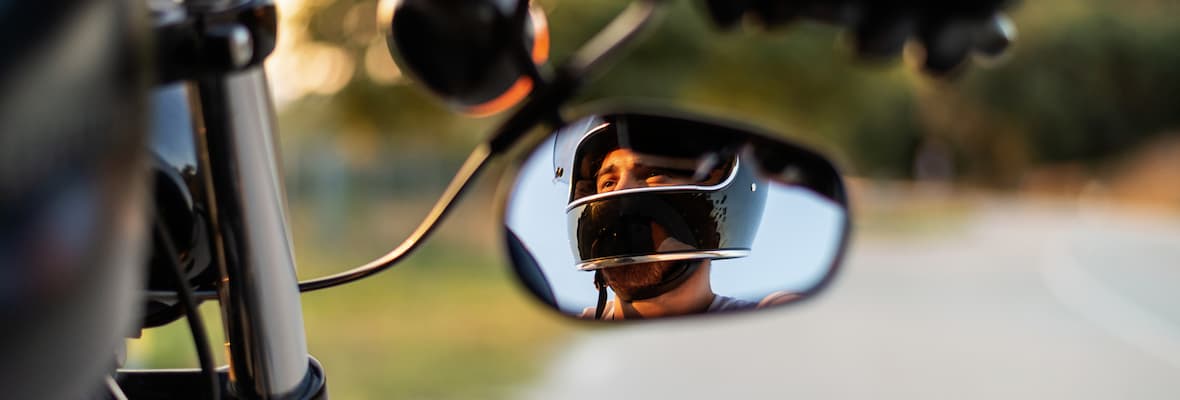Related articles
- buying-your-first-motorcycle-5-things-you-should-know
-
How to Get a Motorbike Licence in Australia
- How to Get a Motorbike Licence in NSW
- How to Get a Motorbike Licence in Victoria
- How to Get a Motorbike Licence in WA
- How to Get a Motorbike Licence in Tasmania
- How to Get a Motorbike Licence in the ACT
- How to Get a Motorbike Licence in SA
- How to Get a Motorbike Licence in NT
- How to Get a Motorbike Licence in Qld
- Motorcycle vs car: 8 reasons to ditch your car for a motorcycle
- 8 of the best motorcycle rides in Australia
- 5 motorcycle safety gear must haves
- How to choose a motorcycle helmet that's right for you
- Pros and Cons of Different Types of Motorcycles
- The Cost of Owning a Motorcycle
- Mastering your motorcycle ergonomics
- The beginner’s guide to purchasing a motorcycle jacket
- How to prevent motorcycle theft
- Motorcycle lane filtering rules explained
- 6 Motorcycle maintenance tasks you can do yourself (inc. checklist)
- How to save on Motorcycle Insurance
- Motorcycle Sales Survey & Statistics 2022
- Do you need a licence for a scooter?
- Best Motorcycle Tours in the World
- Australian Motorcycle Owners Survey and Statistics 2025
- Buying Your First Motorcycle: A Beginner's Guide
Disclaimer: This information is general in nature only. While Budget Direct has endeavoured to ensure the information we’ve relied on is accurate and current, we do not guarantee it. Budget Direct accepts no liability for this information.
Road positioning is essential to a motorcyclist’s safety and visibility while on the road. But there is a right way and a wrong way to position yourself, especially when it comes to sharing the road with other motorists.
Choosing your position on the road
When choosing a position on the road all motorcyclists must consider three key elements: space, surface, and sight.
Space:
As a motorcyclist, you are vulnerable to your surroundings and only have your safety gear for protection in case of an accident. The more space you create from potential hazards (vehicles and pedestrians) the better. This practice is referred to as ‘buffering’ and helps to increase the likelihood of motorcyclists being seen by other road users.
Surface:
All motorcyclists should be very aware of the road’s surface. The quality of the road’s surface can significantly impact a motorcyclist’s lane position (e.g. puddles, potholes etc.). Understandably, you won’t always be able to avoid riding on a poor surface especially when avoiding hazards.
Some poor road surfaces may include:
- Paint
- Oil
- Water
- Sand
- Gravel
- Potholes
- Metal Plates
Sight:
Choose a road position that offers good vision and enough space for you to buffer any potential hazards. The right side of the lane normally offers a great motorcycle lane position with good vision up the road, to the sides and behind. Its only downside is when there is oncoming traffic, and this road position becomes much more dangerous.
A great tip for motorcyclists: Try to avoid the oil trail on the road from other vehicles to avoid a reduced amount of traction, especially in wet weather.
What is buffering?
As a motorcyclist, you are encouraged to create more space around you and further the distance between you and other oncoming vehicles, pedestrians, and wildlife. This practice is called buffering.
With the little amount of protection motorcyclists have it’s very important for you to buffer away from potential hazards and increase the likelihood of you being seen, especially in the event of a crash.
Preparing for multi-lane roads
To reduce the risk of crashes on multi-lane roads you should:
- Choose a lane that’s away from oncoming traffic
- Create a buffer from turning vehicles (even when they aren’t turning)
- Buffer parked and oncoming vehicles
- Slow down and buffer slow-moving or stopped vehicles
- Keep a buffer from other vehicles in bus and transit lanes in case they need to change lanes or make a turn
- Not ride beside other vehicles or in their blind spots
What to look for while riding
Vehicles tailgating
If a vehicle is following closely behind you then it’s recommended that you, as the motorcyclist, choose to ride in the middle of the lane. You should also maintain space from vehicles as they pass by.
Maintain a clear line of vision
The further back you drop from other vehicles the more you can see ahead and be prepared for any eventuality that may occur. In these situations, buffering can also help you to improve the line of vision and make it easier for other motorists to see you.
Blind crests
When approaching a blind crest (top of a hill) slow down, look for road clues and select an appropriate road position. Try to create a buffer on both sides from potential ongoing traffic or traffic hazards.
Positioning for curves and bends
To safely position for curves and bends, there are a few pointers to adhere to which will help other road users see you.
Taking curves and bends this way will slow you down a little on the approach but will allow you to accelerate out much earlier and have a clearer view of the road ahead:
- Plan to start wide for curves and bends for maximum vision
- Plan to finish curves and bends tightly to correct their speed and leave room for errors if necessary
- Keep away from areas where on-coming vehicles are most likely to cross the centre line (also known as the head-on zone)
Exiting wide
Exiting wide can result in a crash and when this happens there is no room for error. When you straighten out of turns too quickly the curve can tighten up and you may need to work extra hard to complete the turn. Turning in too early can also result in a collision or crash on the exit.
Planning a series of curves
Link a series of curves together by starting wide and planning to finish them tight. You should exit each curve tightly so that you’re perfectly positioned for entry into the next curve.
Road safety rules
Overtaking
Before overtaking you should check for side streets, driveways, and concealed driveways. As a motorcyclist, you should create a buffer for any vehicles you’re passing and check for vehicles that may be overtaking you.
Turns at intersections
When turning right maintain a buffer from ongoing traffic. However, when you turn right from a single lane you should buffer hazards as they exit the turn. It’s recommended that all motorcyclists start the turn as close to the far right of the lane or the middle of the road as possible.
When turning left from a single lane you should start buffering hazards as they exit the turn. Similarly, you should start the turn as close to the far-left side of the lane as possible.
When turning left or right you must give way to any pedestrians crossing the road into which you are turning.
Motorcycle Insurance
These tips are of a general nature only and are here to help you better understand how to position yourself confidently and safely on the road. However, despite doing all the right things, accidents can still happen through no fault of your own.
While we can’t help you from getting physically hurt, Budget Direct can help provide peace of mind financially with our competitive offering on motorcycle insurance.
Related articles
- buying-your-first-motorcycle-5-things-you-should-know
-
How to Get a Motorbike Licence in Australia
- How to Get a Motorbike Licence in NSW
- How to Get a Motorbike Licence in Victoria
- How to Get a Motorbike Licence in WA
- How to Get a Motorbike Licence in Tasmania
- How to Get a Motorbike Licence in the ACT
- How to Get a Motorbike Licence in SA
- How to Get a Motorbike Licence in NT
- How to Get a Motorbike Licence in Qld
- Motorcycle vs car: 8 reasons to ditch your car for a motorcycle
- 8 of the best motorcycle rides in Australia
- 5 motorcycle safety gear must haves
- How to choose a motorcycle helmet that's right for you
- Pros and Cons of Different Types of Motorcycles
- The Cost of Owning a Motorcycle
- Mastering your motorcycle ergonomics
- The beginner’s guide to purchasing a motorcycle jacket
- How to prevent motorcycle theft
- Motorcycle lane filtering rules explained
- 6 Motorcycle maintenance tasks you can do yourself (inc. checklist)
- How to save on Motorcycle Insurance
- Motorcycle Sales Survey & Statistics 2022
- Do you need a licence for a scooter?
- Best Motorcycle Tours in the World
- Australian Motorcycle Owners Survey and Statistics 2025
- Buying Your First Motorcycle: A Beginner's Guide



